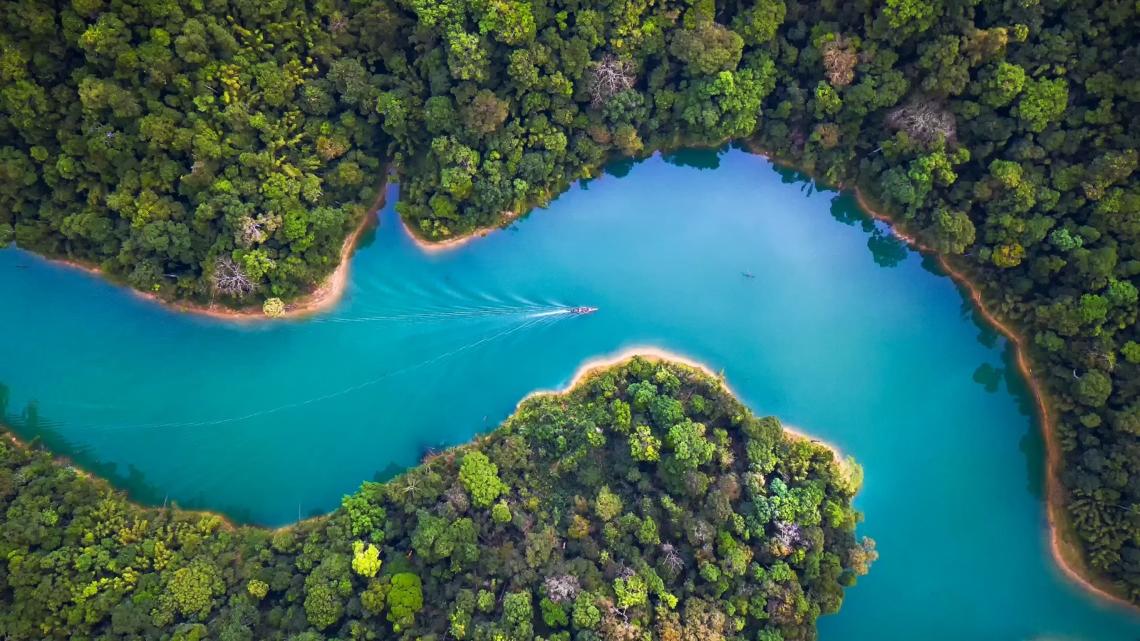Everyone attending Climate Week NYC knows that the world is nowhere near where we need to be to tackle the threats to our planet. But with that shared understanding of the situation comes a risk. The lack of sufficient action is becoming normal.
It is tempting to tell a calming story: policy is advancing, just not yet advancing fast enough. But that is a dangerous myth. We don't need to accelerate along a path we are already on. We need a change in trajectory.
That need is clear when you look at the state of nature across our planet. Recent research by the World Wildlife Fund (WWF) shows that wildlife populations, which serve as indicators of ecosystem health, have decreased nearly 70% over the past 50 years.1 One million species are at risk of extinction because of human activity.2
We know that the nature and climate crises are fundamentally interconnected and need to be solved together. There is no net zero without nature.
The question is what can drive change in the future that we have not seen in the past?
There are at least three parts of that answer.
First, we need to maintain the call to do what is right and match it with a stronger appeal to self-interest. Boardrooms need to know that they are vulnerable. While businesses are increasingly aware of the threats climate change poses to their operations, nature risk remains a nascent topic for many. Our research shows that US$58tn of global GDP - 55% - is highly or moderately dependent on nature. Despite their mutually supportive agendas, climate change and nature loss continue to be addressed in isolation. There is no way to manage business risk effectively without first understanding the nature-climate nexus. Businesses who understand their relationship with nature can begin to develop dual responses and risk mitigation processes such as embedding nature-based solutions into their climate transition plans. Emerging frameworks such as the Taskforce on Nature-related Financial Disclosures can help businesses navigate this complex topic and its intersection with climate.
Second, systemic policy is needed to ensure the alignment between the incentives in market economies and positive outcomes for society and the planet. We need to create a framework that marries the creativity, ingenuity and speed of markets with the authority, scale and legitimacy of governments. It is about rewiring the fundamental system of incentives, norms and values that drive the economy. Looking at climate, the International Energy Agency (IEA) has long described fossil fuel subsidies as a ‘roadblock’ on the pathway to clean energy systems. The flip side is incentives that help to accelerate positive transformations. Examples include the US Inflation Reduction Act, whose package of tax credits and incentives is credited with catalysing significant investment in clean energy projects, and the EU’s recent proposal of its Net Zero Industry Act.
There is a lot of focus on government policy, but just as important - and easier to affect - are policies companies control themselves. Earlier this year, PwC UK worked with London Business School to look at the link between executive pay and carbon reduction targets among 50 top European public companies. It’s a mixed picture. The good news: nearly four in five have some sort of link. More surprising news: in 2022 payouts averaged 86%, with over half at 100%. Given the limited progress made to set emissions on a Paris aligned trajectory, I wonder if those targets are as stretching as they should be.
Third, we need to be honest about the importance of simply setting limits beyond which the market cannot go. Markets only work in the context of boundaries. We already have boundaries when it comes to areas like competition policy, labour markets, and food standards. Now, we need boundaries which reflect planetary limits. Setting science-based targets for nature, using emerging frameworks such as the Science-based Targets Network (SBTN), can help businesses understand their boundaries and the potential repercussions of surpassing them. When I talk to business leaders, many tell me they welcome well-designed regulation that frees them to act in accord with the planet's best interests without paying a penalty. This was evident ahead of the UN biodiversity summit ‘COP15’ last year, when more than 300 businesses from 52 countries called on heads of state to make nature assessment and disclosure mandatory.
Managing this change will take deep collaboration.
Neither climate change nor nature loss can be managed at the level of individual businesses and organisations alone. If your factory is flooded, so are the roads around your factory, and the homes of your workers and the schools of their children. Building private walls won’t work. We need joint action - and robust information systems so stakeholders can make good decisions.
And, of course, we need finance.
A recent UN Environment Programme report estimated that the world spends US$154 billion per year on ‘nature-based solutions’ - less than half the predicted funding needed by the middle of this decade and a third of where we need to be in 2030.
In difficult economic times, it is not realistic to look to the public sector to fill this gap - public funds already account for 83%3 of nature spending. That is why the market mechanisms I have described are so important for bringing in private finance, alongside a focus on growing the scale of projects so they are appealing to providers of capital.
Footnote:
1. Living Planet Report 2022
2. Summary for policymakers of the global assessment report on biodiversity and ecosystem services
3. State of Finance for Nature, United Nations Environment Programme, 2022




